Choosing the right monitor can be a daunting task. With so many options, it's easy to feel overwhelmed.
Two popular choices are OLED and IPS monitors. Each offers unique benefits and drawbacks. To pick the right one, you need to understand these differences.
OLED monitors are known for their stunning contrast and deep blacks. They provide a vibrant viewing experience. On the other hand, IPS monitors excel in color accuracy and viewing angles. They are often more affordable and widely available.
In this article, we'll compare OLED and IPS monitors. We'll explore their strengths and weaknesses. Whether you're a gamer, professional, or casual user, this guide will help you find the best monitor for your needs.
OLED and IPS are two leading display technologies. They both enhance visual experiences but in different ways. Let's delve into what each offers.
OLED stands for Organic Light Emitting Diode. It uses organic compounds that emit light when electricity passes through them. This technology does not require a backlight. It allows for thinner and more flexible displays.
IPS, or In-Plane Switching, is a type of LCD. It uses liquid crystals lined up in a certain way to make bright pictures. Unlike OLED, IPS panels need a backlight, making them slightly thicker.
Here are some key characteristics of ips vs oled monitor:
Understanding these basics helps set the stage for a deeper comparison.
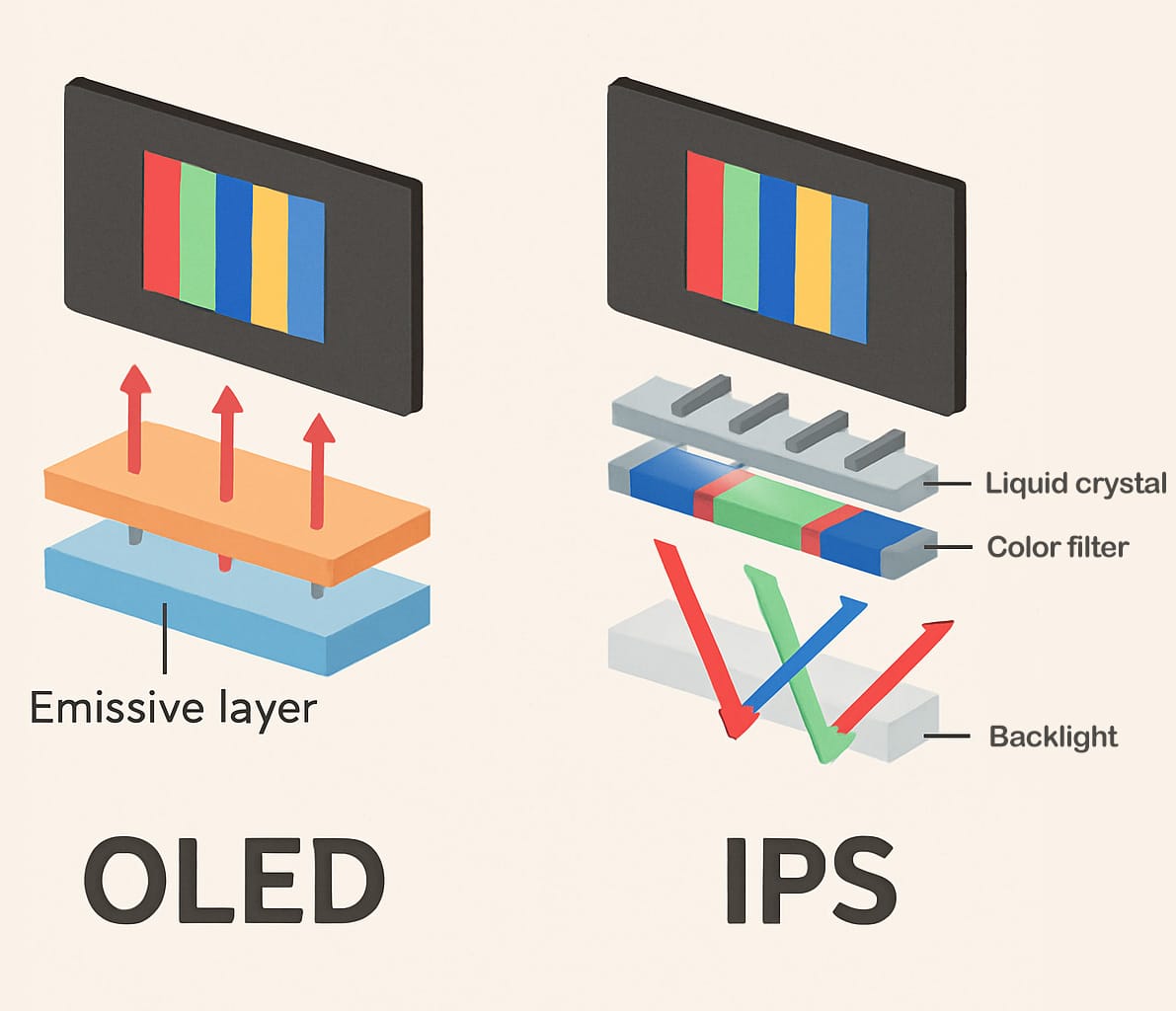
Learn how OLED and IPS work, and you'll know what to choose. They each work differently, giving them unique pros.
OLED Technology works by using organic compounds. These parts light up on their own when electricity hits them. They light up on their own, making blacks deeper and contrast sharper.
IPS Technology operates differently. It uses a layer of liquid crystals aligned side-to-side. Light passes through this layer from a backlight. This setup gives you bright colors and a good picture from any angle.
Key differences in operation include:
These fundamental differences highlight why each technology excels in specific areas.
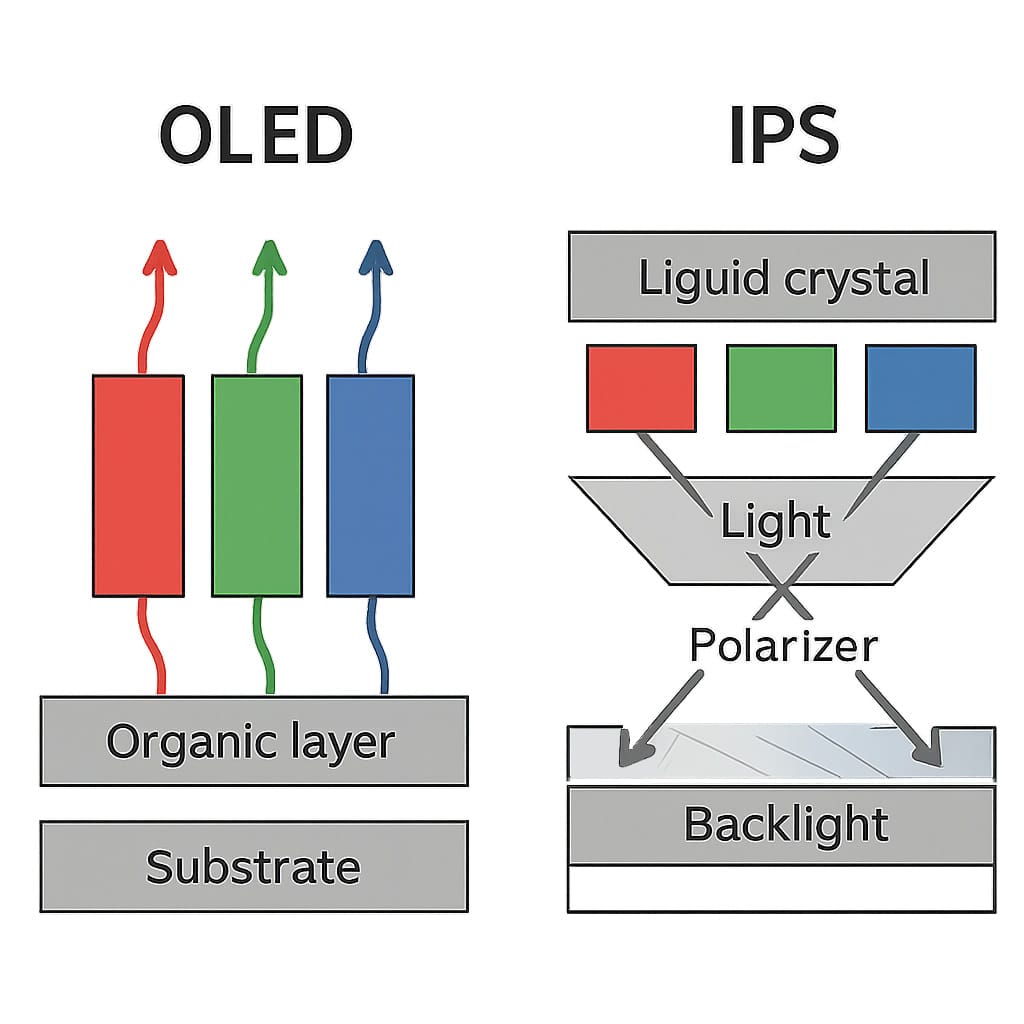
OLED and IPS monitors each present unique strengths and weaknesses. They cater to different user preferences and specific use cases.
One major difference lies in color reproduction. OLED displays tend to offer more vibrant colors and superior HDR performance. This makes them ideal for users looking for eye-popping visuals.
On the other hand, IPS monitors are known for showing colors accurately. They give you dependable, consistent colors, especially for work.
Contrast is another aspect where OLED excels. OLED panels deliver true blacks by turning off individual pixels entirely. This feature enhances the depth of images.
However, IPS panels maintain better color accuracy across wide viewing angles. This is crucial for multitasking setups or collaborative workspaces.
Burn-in is a downside to OLED technology. Pixels may degrade unevenly, leaving ghost images on the screen. IPS monitors don't have this problem as much and usually last longer.
Key takeaways include:
Choose based on what you prioritize—vivid visuals or reliability.
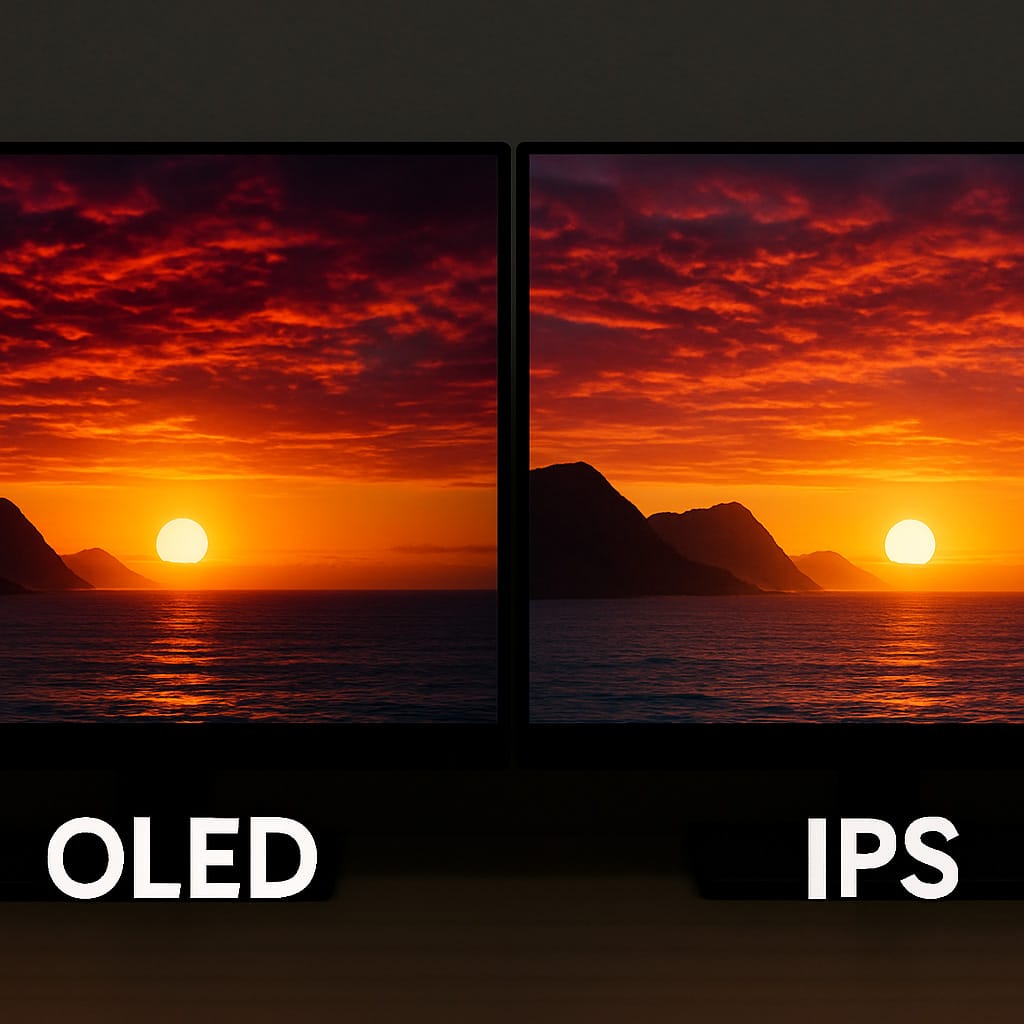
The aspect of picture quality is critical when comparing OLED and IPS monitors. Contrast, color, and brightness define how an image appears on your screen.
OLED panels deliver unmatched contrast. Each pixel emits its light, allowing for true blacks and impressive contrast ratios.
On the other hand, IPS monitors provide even brightness and strong color accuracy. So, they're perfect for jobs where colors need to be spot-on.
When it comes to brightness, OLED displays can suffer in brightly lit environments. Their peak brightness levels often can't match those of top-tier IPS monitors.
However, IPS monitors remain bright in various lighting conditions. This makes them versatile for both home offices and creative studios.
In summary, your need for true blacks and vibrant colors may lead you to OLED. Meanwhile, if consistent brightness and color fidelity matter more, IPS could be your best choice.
Key points include:
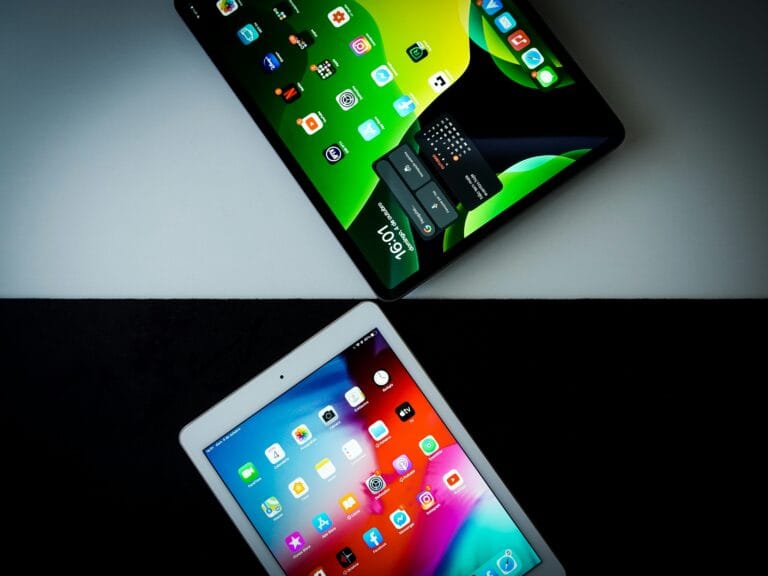
Gamers prioritize response time and refresh rates when choosing monitors. These factors directly impact gameplay smoothness.
OLED monitors boast remarkable response times. They swiftly switch pixels on and off, reducing motion blur so it's hard to see.
Conversely, IPS monitors typically have slower response times. However, many recent models have narrowed this gap significantly.
Refresh rates are another essential consideration. Both OLED and IPS can support high refresh rates, but gamers often praise OLED for its faster response.
For competitive gaming, quick response times are critical. Here’s what to consider:
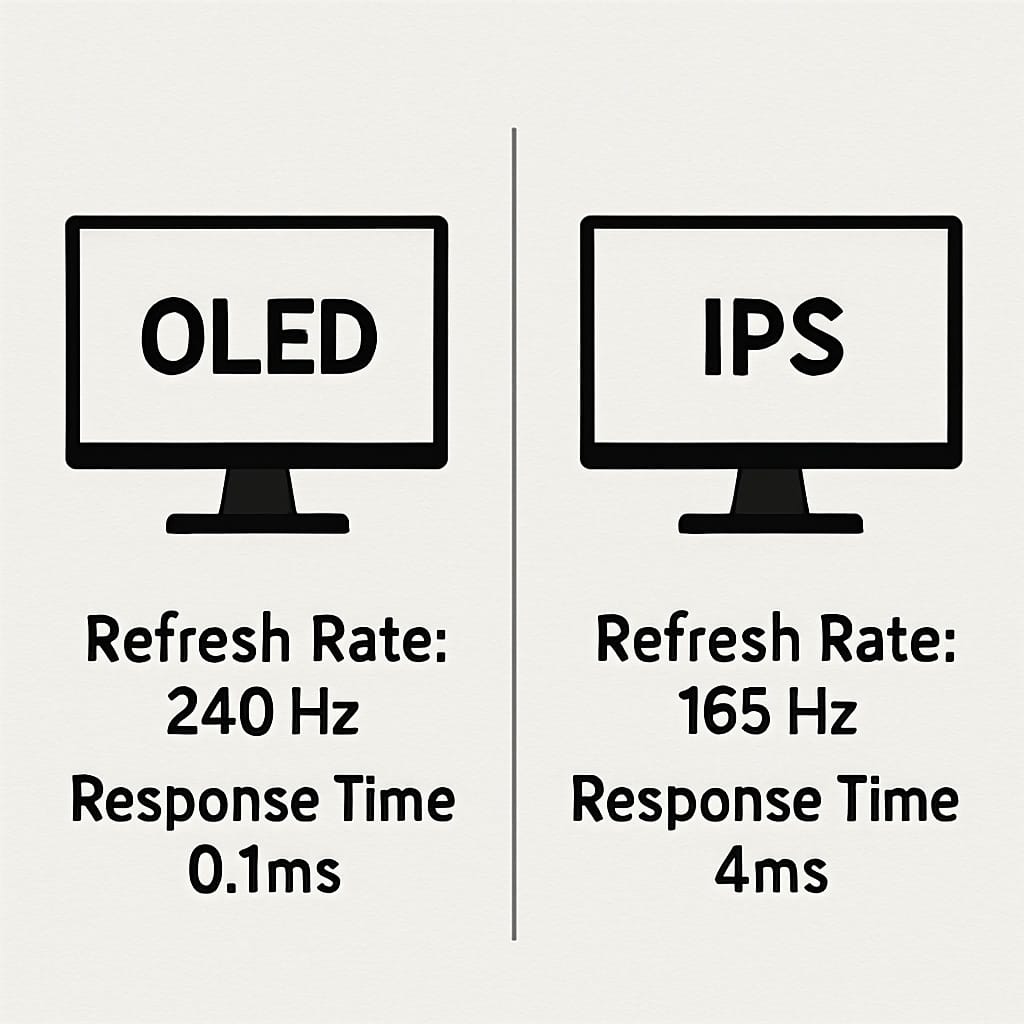
Viewing angles matter for a consistent viewing experience. IPS displays excel here, offering wide angles without color distortion.
Color accuracy is crucial for designers and photographers. IPS monitors are favored for their true-to-life color reproduction.
OLED displays also deliver accurate colors, but there are concerns about stability at different angles.
Key points include:
IPS offers consistent image quality even from the sides. For color accuracy enthusiasts, this feature is essential.
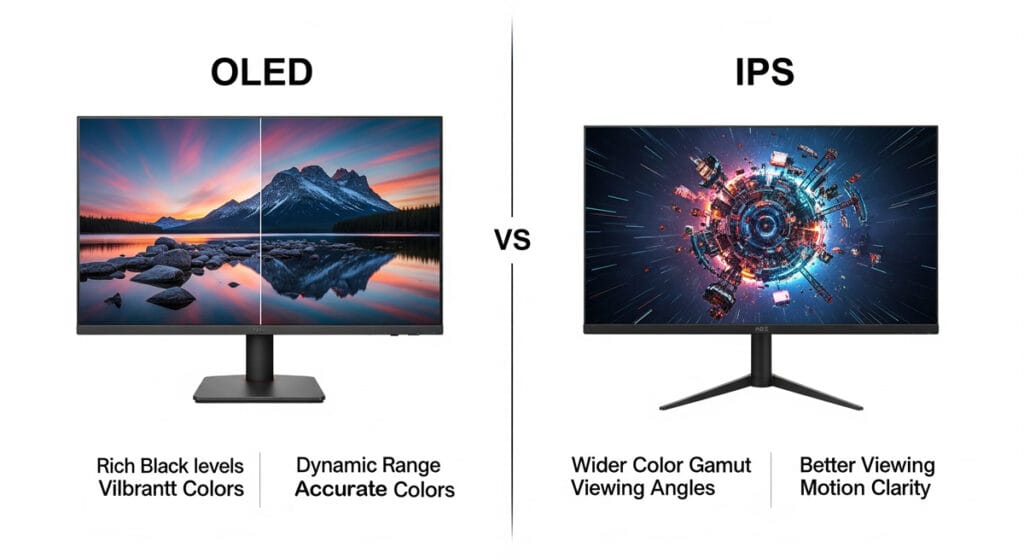
OLED monitors are renowned for their vibrant displays. However, they are susceptible to burn-in, where static images can leave ghostly remnants over time.
IPS displays, in contrast, are less prone to burn-in. They last longer, which is key if you care about durability.
Durability is a critical factor in choosing monitors. IPS generally wins this category due to fewer long-term issues.
Here are key considerations:
Choosing between them requires balancing immediate picture quality with long-term reliability.
OLED monitors typically come at a higher price. They cost more because of their advanced tech and better screens.
This makes them a less accessible option for budget-conscious buyers.
In contrast, IPS monitors are generally more affordable. You can find them at many price points, for everyone from casual users to pros.
Here are the aspects to consider:
Ultimately, your choice will depend on budget and specific needs.
In terms of power consumption, IPS monitors are generally more energy-efficient.
Their technology uses less power. This makes it good for long-term use without high energy costs.
Conversely, OLED monitors tend to consume more power due to their self-lighting pixel technology. Despite this, they offer impressive visual quality.
Key points on power use:
Choosing the right monitor depends on intended use. OLED monitors excel in gaming, offering deeper blacks and quicker response times. These features enhance immersive gaming experiences, making OLEDs ideal for gamers who crave stunning graphics.
For professional tasks like graphic design or photo editing, IPS monitors are often preferred. They provide accurate colors and consistent visuals across wide angles. So, they're ideal for jobs that need things to be exact.
Everyday users looking for a monitor that can do many things well may find IPS monitors more suitable. They're popular because they're affordable and work well in different lights.
Key use cases include:
Everyday Use: IPS for different uses and cost-effectiveness
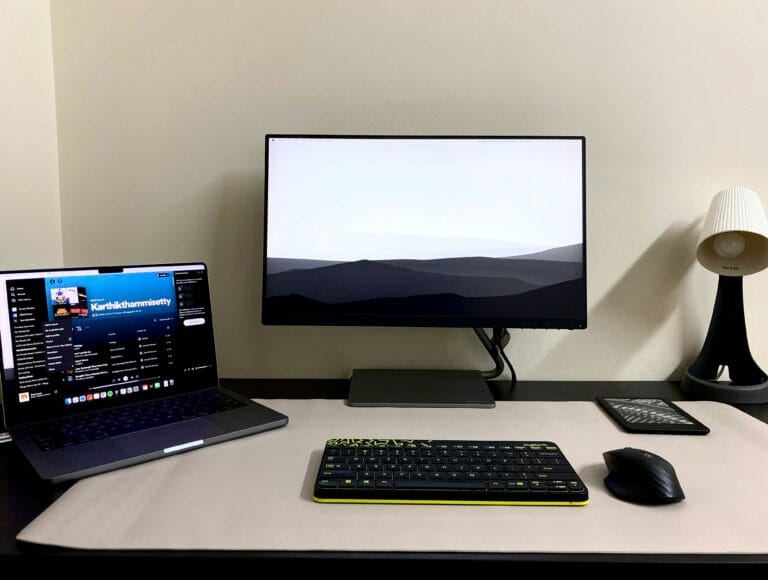
Understanding the strengths and weaknesses of each technology can simplify your decision. Here's a quick summary of the pros and cons:
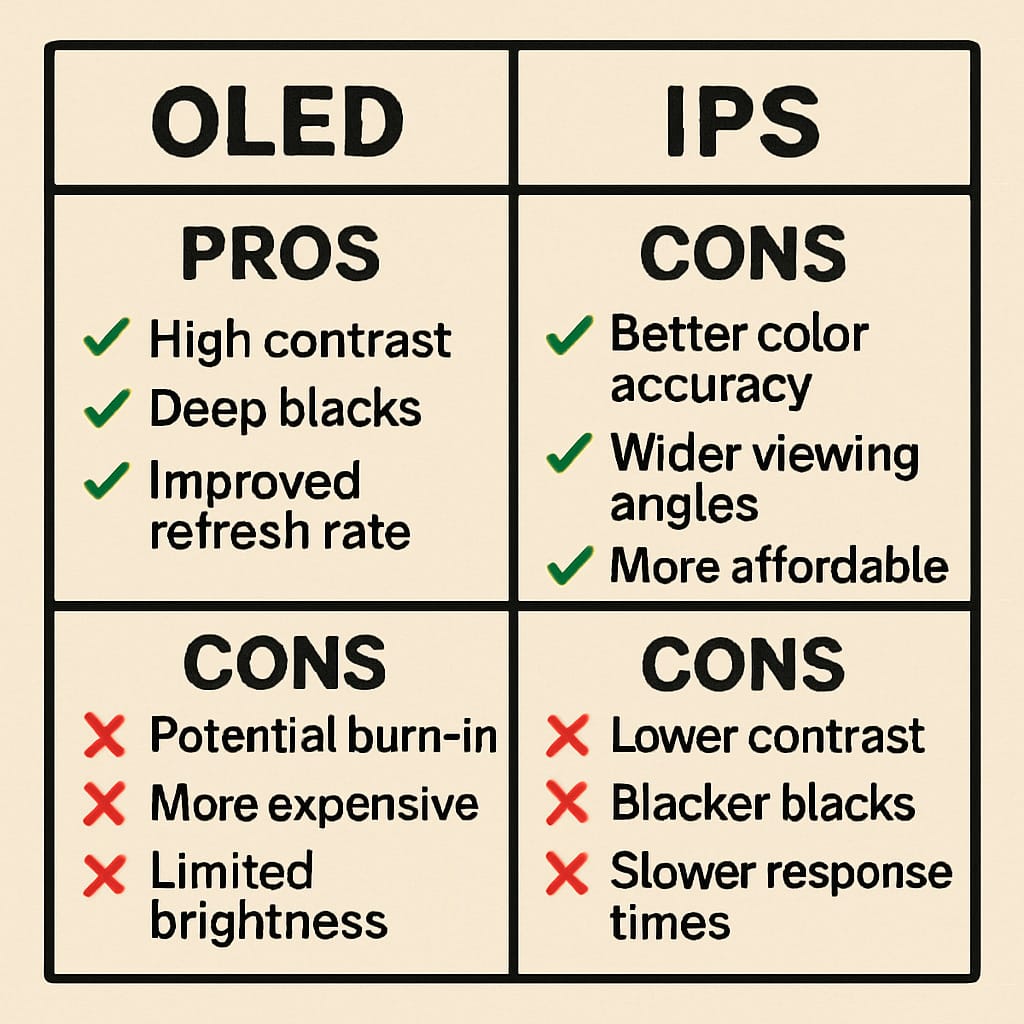
Selecting the right monitor depends largely on your specific needs. OLED monitors are often the go-to for gaming enthusiasts. They excel in delivering superior contrast and rapid response times.
If your work involves color-sensitive tasks, IPS displays might be the better fit. They offer excellent color accuracy and wide viewing angles. Professionals in graphic design and video editing commonly choose IPS monitors for this reason.
Consider your budget and usage scenario before making a decision. For movie buffs wanting a cinematic experience, OLED provides vibrant colors. For those wanting something cheaper and reliable, IPS displays could be a good fit.
Choosing between an OLED and IPS monitor depends on your needs. If you prioritize superior contrast and an immersive viewing experience, OLED might be your best choice. However, if you value color accuracy and viewing angles, IPS could better suit your needs.
Both technologies offer unique advantages. Consider your budget, uses, and personal preferences. Knowing their differences helps you pick the best monitor for your needs.